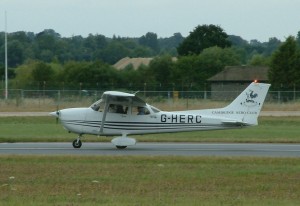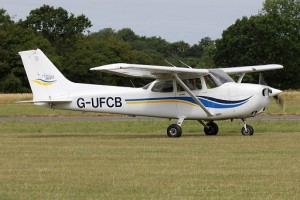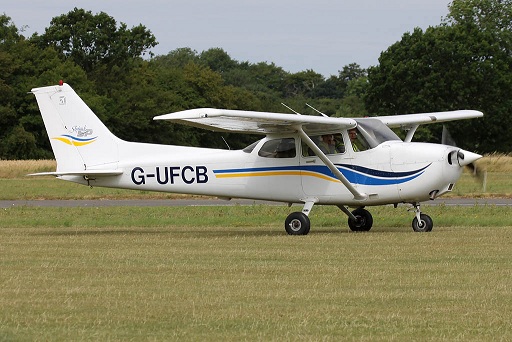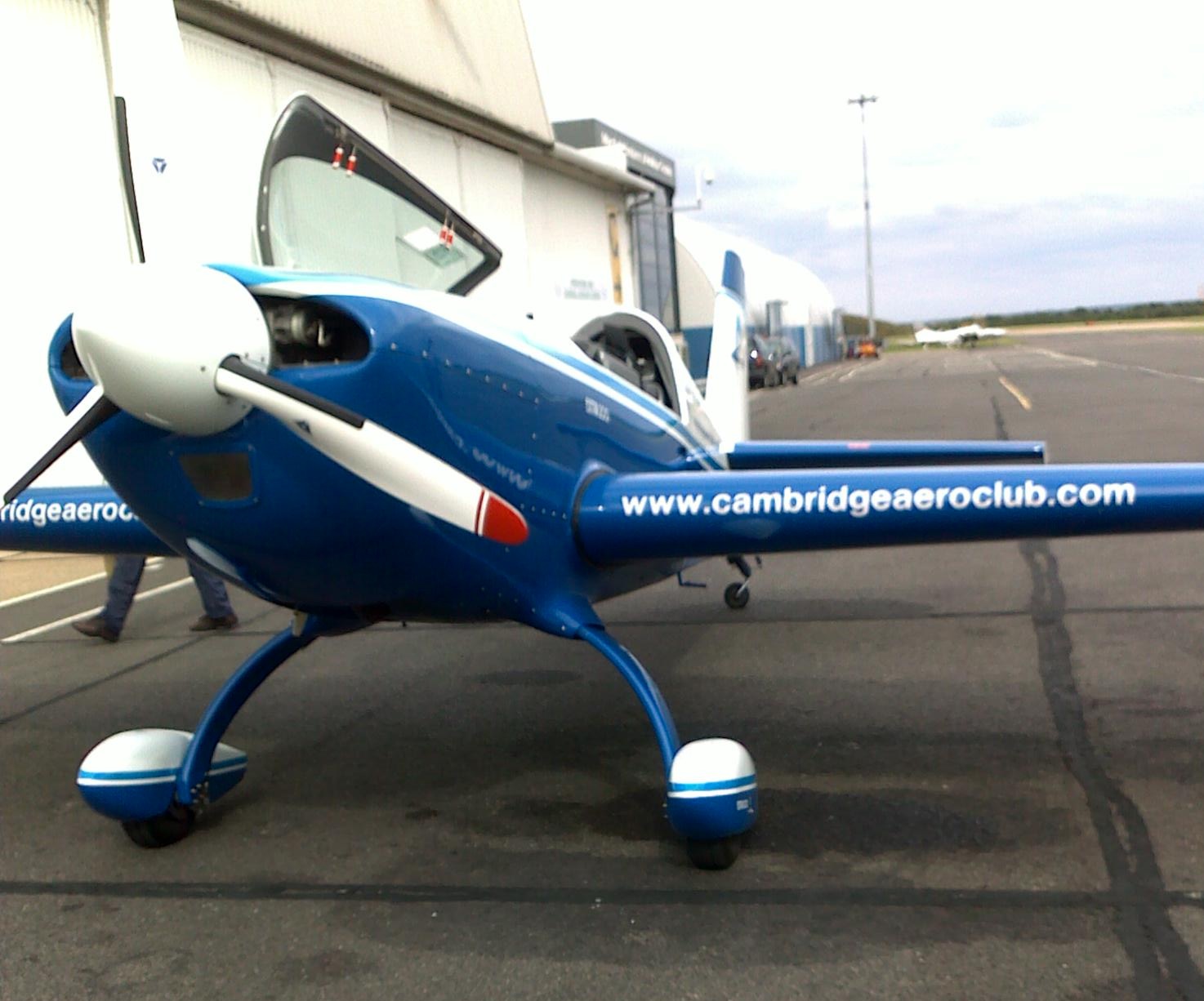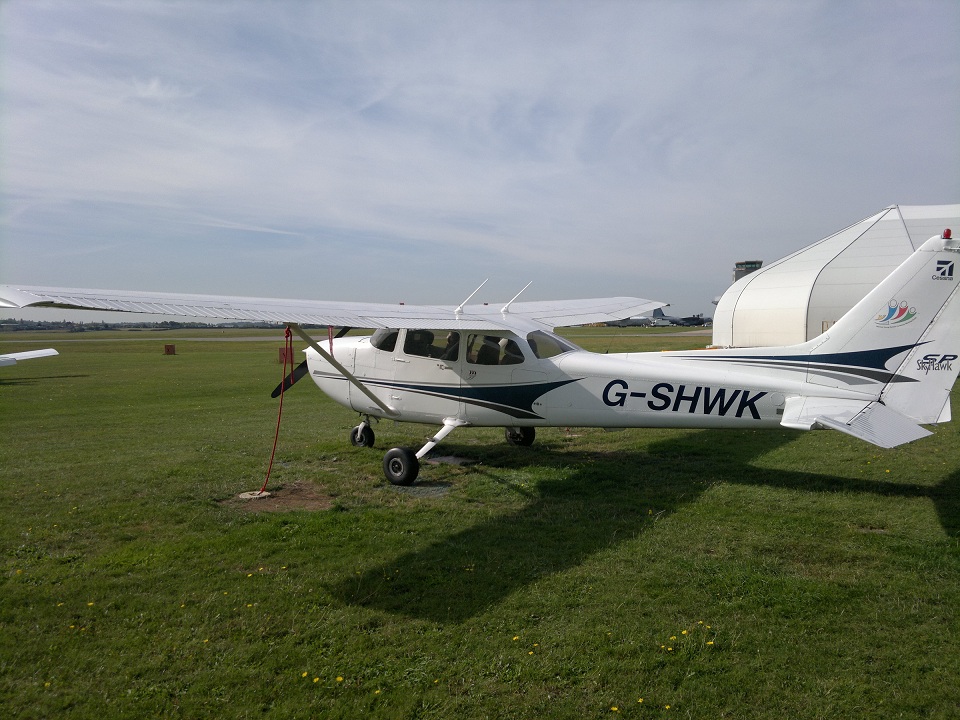It’d been a bleak morning, grey low clouds with the threat of showers, but the weather forecast the night before had said it would break in the afternoon. Upon arrival to the aero club by some miracle, this prediction was coming true. Blue skies were emerging and the wind was calming down nicely.
My instructor said we were on.
This was followed by mutterings that another instructor had Charlie Bravo, I must admit a slight smile crossed my face at this news. Wiskey Kilo was contemplated, but for reasons I’ll never know was passed over for Romeo Charlie (G-HERC). Another smile, I like Whiskey Kilo alot but it has bells and whistles that I don’t need in my life right now (autopilots that need to be checked are off etc.) . Romeo Charlie taxi’s nicely, idles well and flies great but has less of the bells and whistle features I don’t need.
Briefing
Having already been briefed, there was no need to repeat it but for anyone reading this blog for the first time, a quick recap of turning:
The goal is to turn the plane at 30 degrees of bank, without gaining or losing altitude. The procedure is: Bank, Balance, apply Back Pressure…….and finally look out for other planes.
Check-Out & Taxi
Fifteen gallons in the left tank and eighteen gallons in the right, visually confirmed and checked for impurities. Romeo Charlie was looking in its normal good form, except it now appeared to be missing a cowling screw on its port (left) side and strangely the exact same position on the starboard side was loose. It still had plenty of others holding it down so my instructor didn’t seem worried – I must admit I was not so worried about the cowling coming off, but more about the concept of a rogue screw falling out of the plane mid-flight, descending rapidly earthward.
When it came to the radio, it was soooo quiet, it was if the whole world had stopped flying so my initial reaction was “I’ve either got the wrong radio selected, or the volume is off, or something….” but nope, it was just down to the fact the weather had been rubbish, nobody was flying. My taxi clearance request was clear and on the money, remembering this time to read back the runway – also remembering that when a barometric pressure is below a thousand millibars, that “millibars” has to be added on to the read-back. In this case “QNH 995 millibars”.
After many lessons of not riding the brakes, with my original instructor back flying with me, I’m back to riding the brakes. Arrrgh!!
Other than that the taxi was nice enough, did power checks into wind with a C-130 Hercules behind our little Cessna.
The Air Traffic Information Service (ATIS) was describing the runway as “Wet, Wet, Wet.”
At this point I was asked how many take-off’s I’d done? Hoping it was enough I replied, two.
Take Off & Climb Out
Two seemed to be good enough, so I’d be doing the take off – regardless of the wet runway (though I got the impression if this had been my first, it wouldn’t have happened today).
A last check there’s nothing coming as we roll on to the runway, line up and it’s progressively on with the power. Keeping it nice and straight, I found myself almost dawdling as we hit 65knots, enjoying the speed or something and not getting on with the task of applying back pressure to get the plane in the sky. We went up though and were soon heading nicely towards 1000ft.
Remembering to keep eyes looking out of the cockpit as we climb, not staring at the instruments as I did last take off. I’m not sure whether this was what made the take off better, or if it was just the fact I had the weather now on my side.
Leveling off @ 3,000ft
My last few ‘first climb of the lesson” have been overshoots, typically by 150ft before it’s all trimmed up – I was pretty absolute in my mind that this was not happening on this climb, hell would freeze over before I’d let Romeo Charlie go even 20ft over 3,000 as I leveled off.
And with the last touch of the trim wheel, the indicated altitude was 3,000ft exactly. Much better.
Turning (30 degrees of bank)
All my turns to-date have been around 20 degrees, now to put a touch more on and go round, round, round and round some more……without gaining or losing altitude.
Because a Cessna is a high wing aircraft, it’s good to lift the wing of the direction you’re going to turn into and check there’s nothing out there you can’t see. Then it’s bank into the turn applying a little rudder in the same direction as the turn to offset the yaw and applying a small amount of back pressure to keep the plane from losing altitude.
Once in the turn you want to keep a good lookout, really leaning forward to see as far as you can.
If you don’t like heights, this is not going to be for you, in a left turn as you look out and along the now lowered wing you get a great view of the ground in a 30 degree turn. The sky was really clear and this did give some great views, but great views was not why I was up here today.
The horizon was a bit patchy so we skipped over turns on to a landmark and went straight for turns on to a heading.
I was given a heading of ‘North’, if I turned right I have about 40 degrees before I’d have to start rolling out – so I decided I’d go “the long way round” and turn left (remember the views were worth seeing). Not wanting to overshoot, I managed to roll out under shooting by 5-10 degrees. I was then given the heading of 240 degrees and just to keep it interesting I decided I’d turn right for this.
I’m sure my roll out on to heading could be a bit tighter but generally seemed ok to move on.
Turning Climbs / Descents
When climbing or descending in a turn, its typically done at 15 degrees rather than 30 – but just to prove a point we did a couple of turning climbs at 30 degrees to show that everything starts happening faster as you try and climb and hold a turn at 30 degrees. At 15 you have much more time to keep things in order.
Again all going fairly nicely.
Stall Demonstration – (360 Degree turn)
Having climbed up to 3,300ft my instructor said she’d demonstrate a stall – as that was what I’d be doing next lesson.
As the person who would likely take me out for my final check flight (somewhere on a far away horizon at this point) likes 360 degree turns to ensure the area is clear before doing this maneuver. I was told to do one and not worry if I climbed a little, but absolutely don’t lose altitude (this is because you have to have sufficient altitude to have recovered the stall – this is 3000ft above the ground [as appose to above sea level] for a student pilot and 2,000ft for an instructor).
Entering the turn all that went through my mind was “must not lose altitude, lose altitude and might not get to stall….” (I’m sure most people don’t hope to be in a stall in an aeroplane – but I have no problem with stalls and I’m keen to keep ticking the boxes).
Completing the turn roughly at the same altitude we went into it, I handed control back to my my instructor, who then went through the motions of entering the stall:
Slowing the airplane, lowering the flaps, slowing it some more, lifting the nose, lowering the speed some more. Around 35-40knots the stall warning horn went off, as we lost around 5knots more the plane stalled…….fell 20-40ft before my instructor pointed the nose back at the ground, put power back on and recovered it. Simples!
Two things stood out for me in this stall demonstration:
- The stall warning horn isn’t half as loud as videos online will make you believe (at least it isn’t when you’ve got a headset on).
- It’s a fairly straightforward event, if you enjoy being in a stall then I’d say go take a lesson in an Extra – stalling that is much more fun and even though this was done with all the right safety in place, is always going to be safer.
Heading for home
With the stall demo done we headed home, back to a ‘wet, wet, wet’ runway.
This had been one of my best lessons to date, things just went well. Some of the stupid small things like the plane actually starting without a fight, went smooth (Charlie Bravo hates me). Some of the bigger stuff like being more accurate on leveling out of a climb went well. There wasn’t much wind, the skies were great and in a weird way the early morning bad weather keeping loads of other General Aviation on the ground was also really nice…….because I fly out of a commercial airport on some days of the week there is a bombardment of radio traffic and planes to watch out for. Not today.
All fingers crossed now, because my next ‘lesson’ is actually a night flight. Just for a bit of fun, less about getting my PPL and more about seeing what it’s like and seeing what the world holds after that distant day of getting the PPL.
